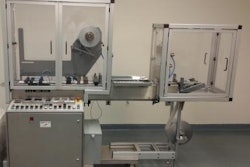When Hazard Analysis & Critical Control Points (HACCP) methodology is applied to packaging, it can be a powerful tool, but because of application nuances, it has been more difficult
to adopt. Packaging and HACCP go back years as either individual consumer packaged goods companies (CPGs) sought to make their processes safer for food applications and/or packaging suppliers took on the challenge themselves. This has been met with several frustrations and is only now being properly addressed through conversations between the food manufacturers and the packaging industry.
As we look to today, we find an interesting fact about packaging material and equipment suppliers: Even though they participate in the food supply chain, they also supply other industries as well. The packaging industry has one foot out of and one foot in the food business. This disparity has lead to a lack of focus and understanding. Couple that with the fact that CPGs have focused initially on their own processes and upstream ingredient suppliers, and we have an opportunity to achieve better coupling between food safety and packaging.
Packaging-specific HACCP considerations
When HACCP was originally applied to packaging, the packaging industry became confused. Sure, foreign material was an easy target. But for years prior, individual CPGs were telling the packaging industry to shore up their Good Manufacturing Practices (GMPs). So when the CPGs were asking the packaging industry to incorporate HACCP-based programs, the packaging industry made assumptions about what constitutes a Critical Control Point (CCP), leading many to ask, “Why another level of quality? We have foreign material abatement programs in place, and they would not be a CCP anyway.” Adding to the confusion was an overall CPG lack of understanding of the packaging manufacturing process, so they could not directly speak to the issues at hand. Adding to all of that was the fact that of the three types of hazards—micro, chemical, and physical—all of the regulation and training that the CPGs could offer related to microorganism controls, which the packaging industry thought they had very little impact on.
The packaging industry as a whole also sees itself as somewhat of an oxymoron with regards to the food industry’s rules. Difficult questions and issues arise such as:
“What is your glass policy?” How does a manufacturer of glass respond to that? As much as the food producer gets rid of glass everywhere, this is 100% of the deliverable that the glass manufacturer is expected to deliver.
“How are you metal detecting and to what size?” Metal can producers are still wrestling with this question today.
“Create it please with die cuts yet do not ship me any of the scrap.” This issue speaks to the challenge of eliminating foreign material from the food packaging supply chain.
These examples highlight the areas where food manufacturers and packaging suppliers have not communicated well. Historically, very little information was available to address these issues. But in recent years, training materials have been developed to specifically help address the area of food packaging and food safety.
PAC - The Packaging Association has training and certification programs for packaging suppliers across North America wanting a certified HACCP packaging program. The
Global Food Safety Initiative (GFSI) is also a resource for companies wanting to become HACCP-certified. Another resource, which is free, is the Institute of Packaging Professionals’ (IoPP)
Food Safety Alliance for Packaging (FSAP) models. Through the FSAP, hundreds of CPGs and supply chain partners in the packaging community have joined forces to discuss the issues that have been seen and to create HACCP plans and prerequisite programs for all to use.
About the Author: In his role at General Mills, the author fosters innovation and industry outreach, and has been auditing packaging specifications and supplier conformance for more than 12 years. He is also former Chairman of the Food Safety Alliance for Packaging (FSAP), a technical group of the Institute of Packaging Professionals (IoPP).
This article is adapted with permission from the book, HACCP: A Practical Approach, Third Edition, available from Amazon.com.
Liked this article? Download the entire Food Safety Playbook here.
Packaging-specific HACCP considerations“What is your glass policy?” “How are you metal detecting and to what size?”“Create it please with die cuts yet do not ship me any of the scrap.”PAC - The Packaging AssociationGlobal Food Safety Initiative (GFSI)Food Safety Alliance for Packaging (FSAP)About the Author: In his role at General Mills, the author fosters innovation and industry outreach, and has been auditing packaging specifications and supplier conformance for more than 12 years. He is also former Chairman of the Food Safety Alliance for Packaging (FSAP), a technical group of the Institute of Packaging Professionals (IoPP).
This article is adapted with permission from the book, HACCP: A Practical Approach, Third Edition, available from Amazon.com.

























